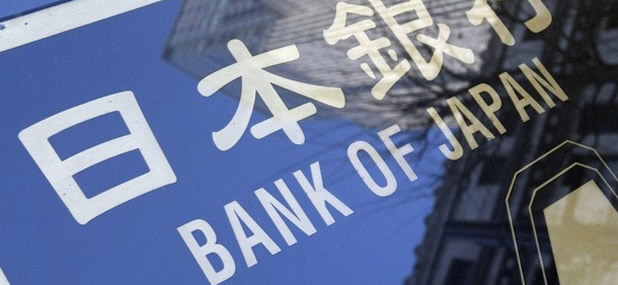Aftershock: Japan’s Economy One Year On

by Dustin Dye
Typhoons, fires and earthquakes make up what is commonly known as “the Three Scourges of Japan.” The Japanese have long known not to take the ground for granted. Still, many were unprepared for the quake that struck off Japan’s northeastern coast at 2:46 p.m., March 11, 2011. The 9.0-magnitude quake was the most powerful to ever hit Japan. The resultant tsunami claimed more than 19,000 lives, injured another 27,000, and left 325,000 people without homes—a human tragedy on a scale that occurs rarely in history. However, the disaster didn’t end with the natural forces. A 46-foot wave knocked out the reactors at Fukushima Dai-ichi nuclear power plant, which were only designed to withstand a wave less than 19 feet. The subsequent meltdown was the worst nuclear crisis since Chernobyl. Facing such a seemingly insurmountable set of disasters, many predicted an economic meltdown to follow. However, the Bank of Japan took decisive measures to ensure the country’s economy remained on stable ground.
An already troubled economy
Japan’s economy, like the country itself, was in shambles after World War II. But by the mid-1960s, not only had Japan recovered, it was thriving. This period of rapid growth in which Japan became the world’s second largest economy was dubbed “the Japanese miracle.” The miracle ended abruptly when the asset price bubble burst in 1991. The next 20 years brought economic stagflation.
When the quake hit, power shortages resulting from the crisis at Fukushima caused many Japanese manufactures to halt domestic production. Flooding in Thailand further damaged Japanese firms’ productivity. The sovereign debt crisis in Europe caused currency speculators to flock to the Japanese yen as a safe-haven currency, strengthening the yen and making Japanese exports, the life-blood of the economy, less competitive overseas and diminishing returns on dollar-to-yen conversions.
The Bank of Japan takes action
The yen had been strengthening steadily against the dollar since the 2008 U.S. housing market crash, but the fact that the yen hasn’t strengthened further can be attributed to the efforts of Japan’s Central Bank, the Bank of Japan.
Following the quake, the BOJ immediately pumped liquidity into the market. Almost overnight, the central bank poured 15 trillion yen ($183 billion) into the economy in its biggest one-day operation and offered to buy 3 trillion yen ($61 billion) of government bonds from lenders. The bank also ensured that 55 billion yen ($1.1 billion) went to financial institutions in the Tohoku region, which was hardest hit, so survivors could have access to cash. The central bank took advantage of the record-high strength of the yen to boost asset purchases.
The bank’s monetary easing took upward pressure off in February by purchasing 65 trillion yen ($793 billion) of Japanese government bonds. In March the bank announced a construction loan program totaling 1 trillion yen ($12.2 billion) for banks in the quake damaged region.
Compare the amount the BOJ spent to the Troubled Asset Relief Program passed by Congress and signed into law in 2008. TARP cost the U.S. $700 billion, the bulk of which has already been paid back by the banks. The amount of money the BOJ has dedicated to averting a financial crisis also dwarfs the 130 billion Euros ($170 billion) the European Union paid to bailout Greece in February.
The BOJ has further plans to help the country’s economic recovery by pushing inflation up to 1 percent and keeping interest rates at around zero to 0.1 percent. The inflation rate hasn’t risen above 1 percent since deflation began in 1997. The BOJ strategy of push up inflation is designed to combat falling prices, which discourage consumers from spending. After all, why would anyone go out and buy a new TV today when they could get it cheaper next month? The U.S. Federal Reserve, by comparison, set an inflation target of 2 percent in February.
Looking forward
The Japanese economy still faces daunting challenges. In the short term, consumer confidence remains low due to fears of radioactive contamination, especially in food from the Tohoku region. In the long term, the workforce is expected to drop to 50 percent of the population by 2050 as people live longer and have fewer children. All of the world’s post-industrial societies expect to face a similar problem to some degree, and all are looking to Japan to set a precedent for how a country can grow its economy while taking care of its seniors.
Nevertheless, Japan’s economy is still more vibrant than the numbers suggest. It remains the world’s third largest economy, behind the U.S. and China, and is much more stable than its East Asian neighbors.
The Bottom Line
The actions taken by the BOJ averted an economic crisis following the quake-tsunami-nuclear disasters. The fact that the economy didn’t collapse entirely after the disaster, bringing world markets down with it, is a testament to the efforts of the central bank.
Dustin Dye is a novelist and the FPA's Japan blogger. He was based in Okayama, Japan, for the past three years and covered the aftermath of the 2011 earthquake.





